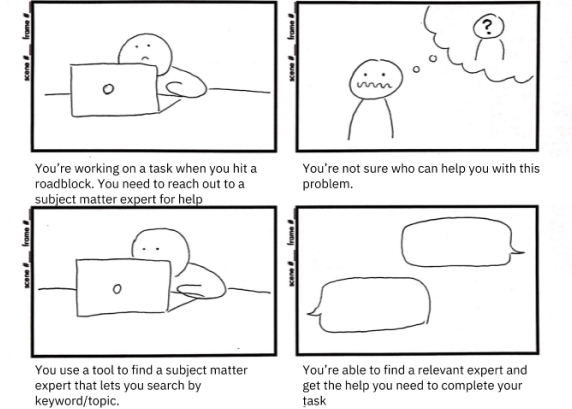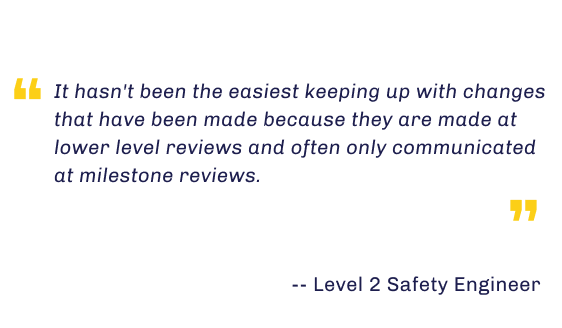Evaluative Research
We used a variety of research and ideation techniques to further narrow and validate our problem scope.
We created a variety of storyboards that were used to conduct speed-dating testing to validate our user needs.




Based on our speed-dating exercises, we narrowed down to the top 2 ideas tha participants identified as more salient and impactful issues:
How can we better align different engineers' priorities and missions? Currently, Level 3 engineers refine their work to a level that can cause delays, frustrating Level 2 engineers who manage higher level processes.
Closing the loop: how can we improve the CM process so it is easier to track and follow a change as it is proposed, sent, received, acted upon, and ultimately resolved. This is currently a very manual process, which leads to gaps and detials slipping through the cracks.
After evaluating our remaining ideas to consider what resources our team would realistically have easy access to for later user testing, we were able to pinpoint our final project focus: Prioritization Alignment.
To encourage further divergent thinking, we conducted a creative matrix ideation exercise. This exercise allowed us to explore possible solutions to our design opportunities across a variety of platforms.

This exercise enabled us to further identify narrowed design opportunities within the overall problem area of prioritization alignment.
Different teams' incompatible design approaches often aren't discovered until milestone reviews. Incompatible platforms prevent intergration and force completed work to be redone.
Data consolidation takes immense time and effort, given that data is spread throughout teams. This makes it difficult to communicate the story of design decisions and justifications to other discipline teams.
When interdependent teams’ priorities are not aligned, seemingly small schedule delays can create a chain impact that cause overall larger delays.
From here, we created 3 measures of criteria for further narrowing:
With these criteria in mind, we unanimously decided to move forward with the following refined focus: How can we ensure design assumptions are shared between teams leading up to milestone reviews?
We further validated this focus by conducting follow-up interviews with questions that focused on milestone reviews to best understand the specific processes and challenges associated with these events.

